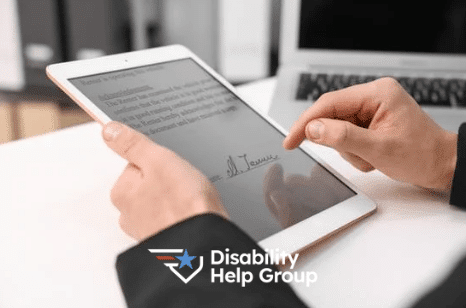Traumatic brain injury (TBI) usually happens when you suffer an injury to the brain. Usually, this can be caused by different events. The most common include falls, car accidents or sports injuries. Most people recover well from symptoms caused by the injury. However, sometimes symptoms can last much longer.
Symptoms of traumatic brain injury
Traumatic brain injuries can cause many different symptoms. These can include difficulty thinking, feeling slowed down or difficulty concentrating. Traumatic brain injuries can cause physical symptoms. These include headaches, nausea or vomiting or feeling tired. Traumatic brain injuries can also cause mood symptoms. Mood symptoms include irritability, sadness or anxiety. Traumatic brain injuries can also interfere with sleep.
Social Security disability benefits for traumatic brain injury
You can apply for Social Security disability if you have a TBI. However, you must meet certain requirements to receive benefits. Generally, your condition must interfere with your normal daily activities. Additionally, your symptoms must keep you from working for at least 12 months. To qualify for Social Security disability insurance benefits (SSDI) you also must have worked a certain number of years recently.
Social Security definition of traumatic brain injury
Social Security provides a listing of impairments, known as the “Blue Book”. The Blue Book provides specific conditions you must meet to qualify for disability benefits. Typically, the listings consider the most extreme severity of symptoms. Social Security considers traumatic brain injury under listing 11.18.
Listing 11.18 traumatic brain injury
Social Security considers traumatic brain injury as brain damage caused by skull fracture, a closed head injury or penetration by an object into the brain tissue. To qualify under the listing you must show:
- The inability to control the movement of at least two extremities (either an arm and a leg or two arms or two legs AND
- Extreme difficulty in balancing when standing or walking, standing up from a seated position or using the arms OR
- “Marked” physical problems and a “marked” limitation (for at least 3 months post-injury) in any one of the following:
- Thinking
- Interacting with others
- Finishing tasks
- Regulating emotions and controlling your behavior
Meeting the listing for traumatic brain injury
Social Security defines marked as more than moderate but not extreme. “Marked” means having a serious limitation in that area of functioning. “Extreme” means not being able to function in that area at all.
What if my traumatic brain injury doesn’t meet the listing?
Many people will not meet the listing for traumatic brain injury. However, you can still get disability benefits. Specifically, you need to show that your traumatic brain injury limits your functioning and keeps you from working. If you don’t meet the listing, Social Security considers your residual functional capacity (RFC). Your RFC includes the most you can do despite your conditions.
Example 1: traumatic brain injury and Social Security disability
For example, Donald had a car accident and hit his head. He lost consciousness when he hit his head. Following his accident, Donald started having frequent headaches. He started having problems with his balance. Donald also started having trouble remembering things and concentrating. He became irritable easily. Social Security found that Donald’s symptoms would cause him to miss work frequently. They also found that he would not be able to stay focused throughout a work day. Therefore, Social Security approved his case.
Medical evidence for traumatic brain injury
Social Security needs evidence showing that your symptoms cause severe problems. Therefore, you must provide medical evidence related to your traumatic brain injury. Generally, medical evidence includes your doctor’s notes, test results and imaging. Your doctor should document:
- Any physical problems using your arms or legs
- Difficulty with balance or coordination
- The frequency and severity of ongoing symptoms such as headaches or blurred vision
- Behavioral changes in your mood or personality
- Problems with focus or concentration
- Side effects from medications
RFC forms for traumatic brain injury
Frequently, traumatic brain injuries cause both physical and mental symptoms. An RFC form can help explain how your condition impacts your functioning. It should be very detailed. It should include all of your symptoms and treatment. Your doctor should include both your physical and mental limitations. An experienced disability advocate can provide these forms to you.
Social Security grid rules
Social Security uses a chart called the Medical-Vocational guidelines, known as the “grid rules”. They use this chart to help evaluate your disability claim. These grid rules make it easier for people over 50 to win their disability case. The grid rules make it even easier for people over 55. The grid rules allow Social Security to approve your case if you can’t do your past work, even if you can do other types of less physical work.
Example 2: grid rules over 50
For example, Paula, 53, suffered a TBI. Her symptoms included frequent headaches, poor sleep and difficulty concentrating. Paula previously worked as a cashier and warehouse worker. Social Security found that Paula could not stand or walk for long periods. They also found she could only perform simple and routine tasks. She was not able do either of her past jobs. Social Security found she could do simple, seated jobs. However, under the grid rules, Paula was approved for benefits.
Example 3: grid rules over 55
In another example, Bob worked as a mail carrier. He suffered from a TBI. Following his injury, he started having seizures. He also suffered from weakness in his arms and legs and mood swings. Social Security found that Bob could not return to his job as a mail carrier. Social Security found that he could do other less physical jobs. However, since Bob was 57 years old, the grid rules applied. Social Security approved his disability claim.
Call Now for a Free Case Review, 800-700-0652
Make sure you start your SSDI and VA disability claim the right way and apply for all the benefits you deserve. Contact us now for a free consultation.







